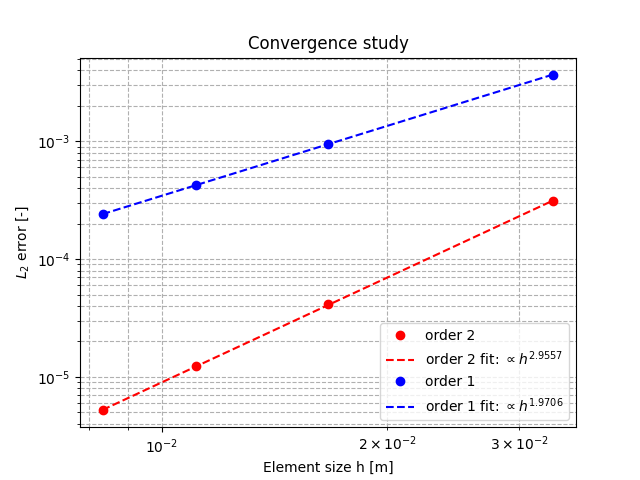Example 4: steady-state solution of the Cahn–Hilliard equations¶
Files¶
- Comprehensive test file: main.cpp
- Reference results for comparison: convergence_output_ref.csv
Statement of the problem¶
This test consists of finding the steady-state solution of the Cahn–Hilliard equations. A transient simulation is performed to reach this steady-state, and a convergence analysis is carried out to ensure the consistency of the results.
The domain is a square
where is the phase indicator, the generalized chemical potential and the derivative against of the potential defined by:
Initial condition¶
The initial condition is given by:
Parameters used for the test¶
For this test, all parameters are equal to one.
| Name | Description | Symbol | Value |
|---|---|---|---|
mob |
mobility coefficient | ||
lambda |
energy gradient coefficient | ||
omega |
depth of the double-well potential | ||
sigma |
surface tension | ||
epsilon |
thickness of interface |
Boundary conditions¶
Neumann boundary conditions are prescribed on boundary of the domain:
Numerical scheme¶
- Time integration: Euler Implicit over the interval with a time-step . The calculation stops when convergence criteria are reached.
where and .
- Spatial discretization for convergence analysis: uniform grid with nodes in each spatial direction, with and finite elements
- Newton solver: relative tolerance , absolute tolerance
- Iterative solver: HYPRE_GMRES
- Preconditioner: HYPRE_ILU
Results¶
The steady state solution is given by:
Figures 1 shows the results of convergence analysis with and .
